Kioxia is thinking bigger partnering with some of its hyper-scale clients. When many users think about storage, and specifically their own systems, they think about the SSD or perhaps SSD in their notebooks, workstations, or a phone/ tablet’s local flash storage. When hyper-scalers think about SSDs, they think about the need to service a variety of workloads and deploying at a huge scale. That is where Kioxia Software Enabled-Flash comes in.
Kioxia Software-Enabled Flash Thinks Bigger
Previously we covered Kioxia Software-Enabled Flash or SEF but the company is getting into SEF at a greater detail around six quarters later.
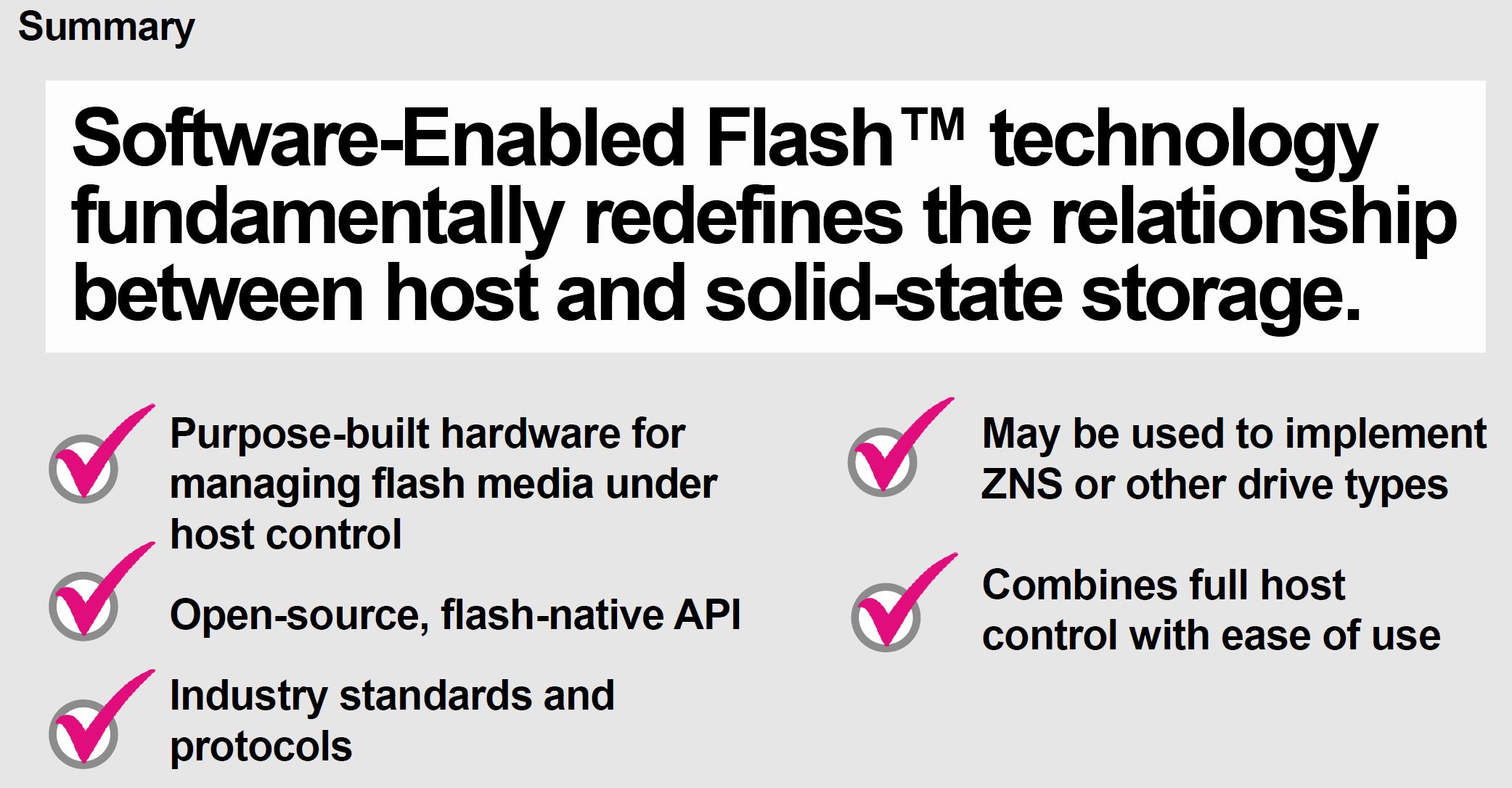
The basic setup is that SEF looks to conceptualize storage in units of many physical drives. Each drive has its controller and also NAND packages onboard. Cloud providers today often have different drives they deploy for standard block storage versus database ZNS. As a result, what could otherwise be a homogenized standard set of SSDs requires many different models. SEF looks to bring this back to managing devices at a higher level.
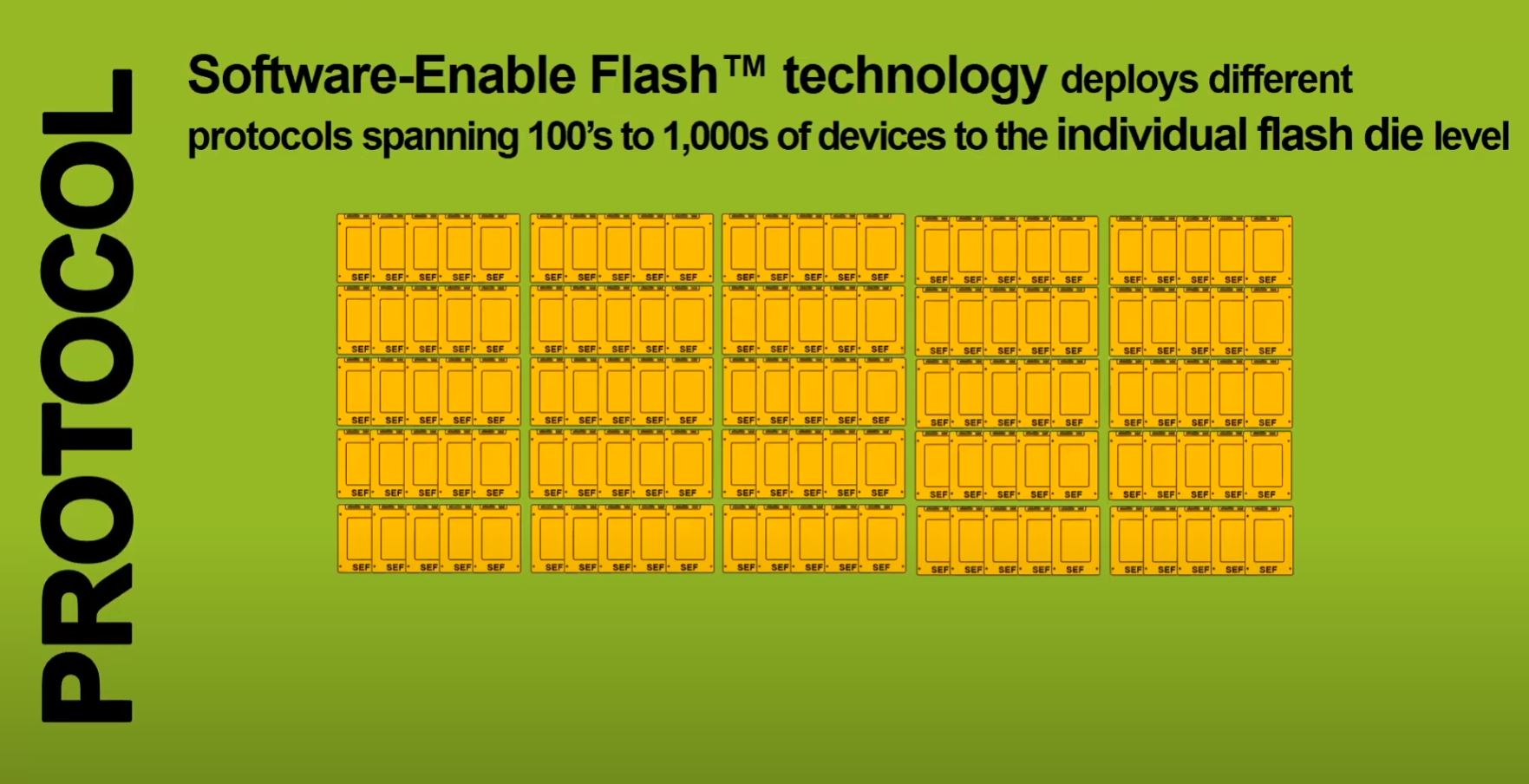
SEF allows spanning protocols across many physical drives/ devices. Cloud providers can then place workloads down to the individual die across devices and physical boxes. Being able to withstand a die failure on a drive is important, but it is more powerful (and efficient) if the resilience is spread across multiple devices.
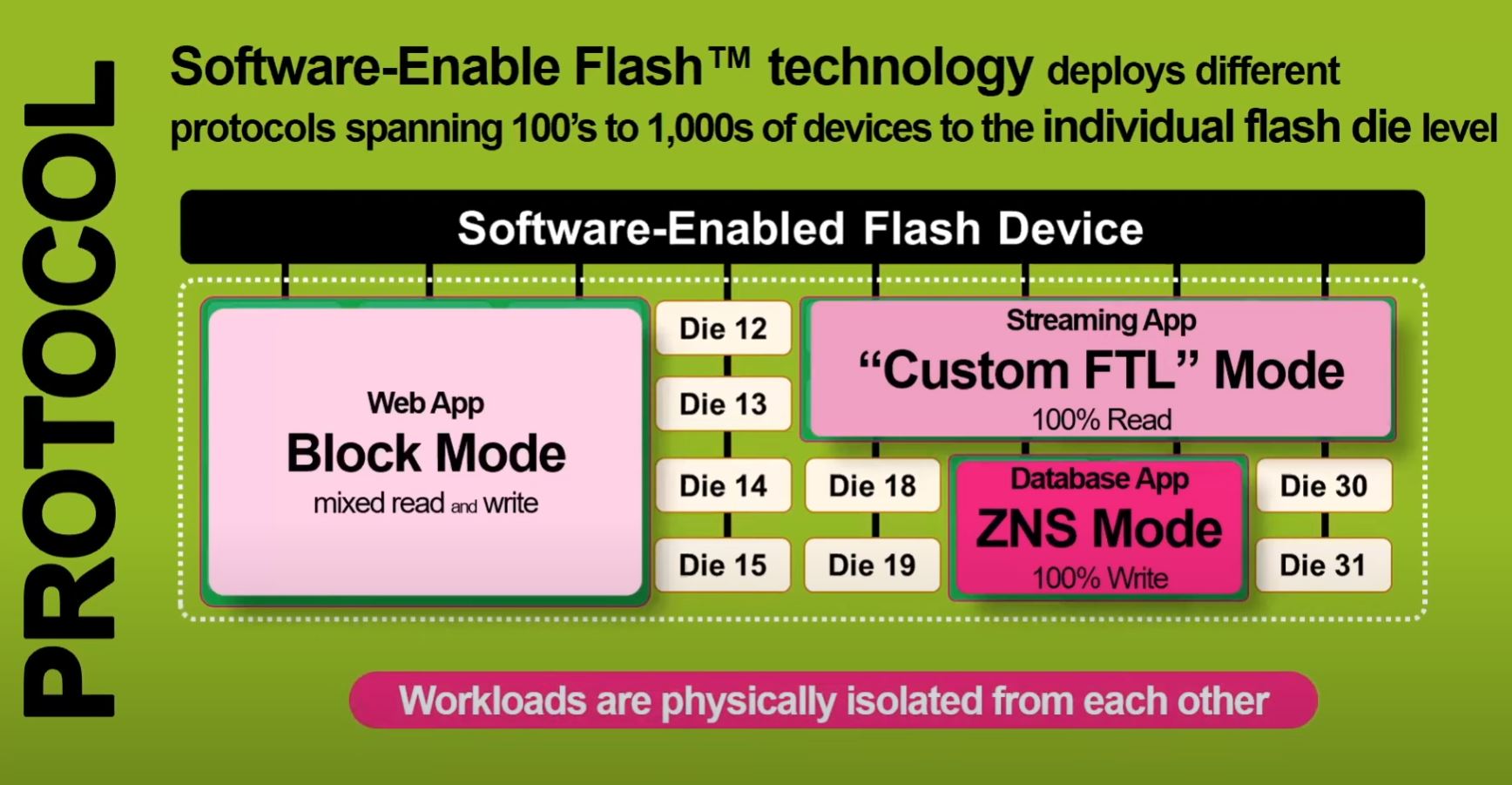
Being able to change the personalities of drives, and take advantage of the SSD in terms of NAND attached to a controller that can be optimized across those building blocks for specific applications, means that a cloud provider can deploy a single drive type. That brings efficiencies.
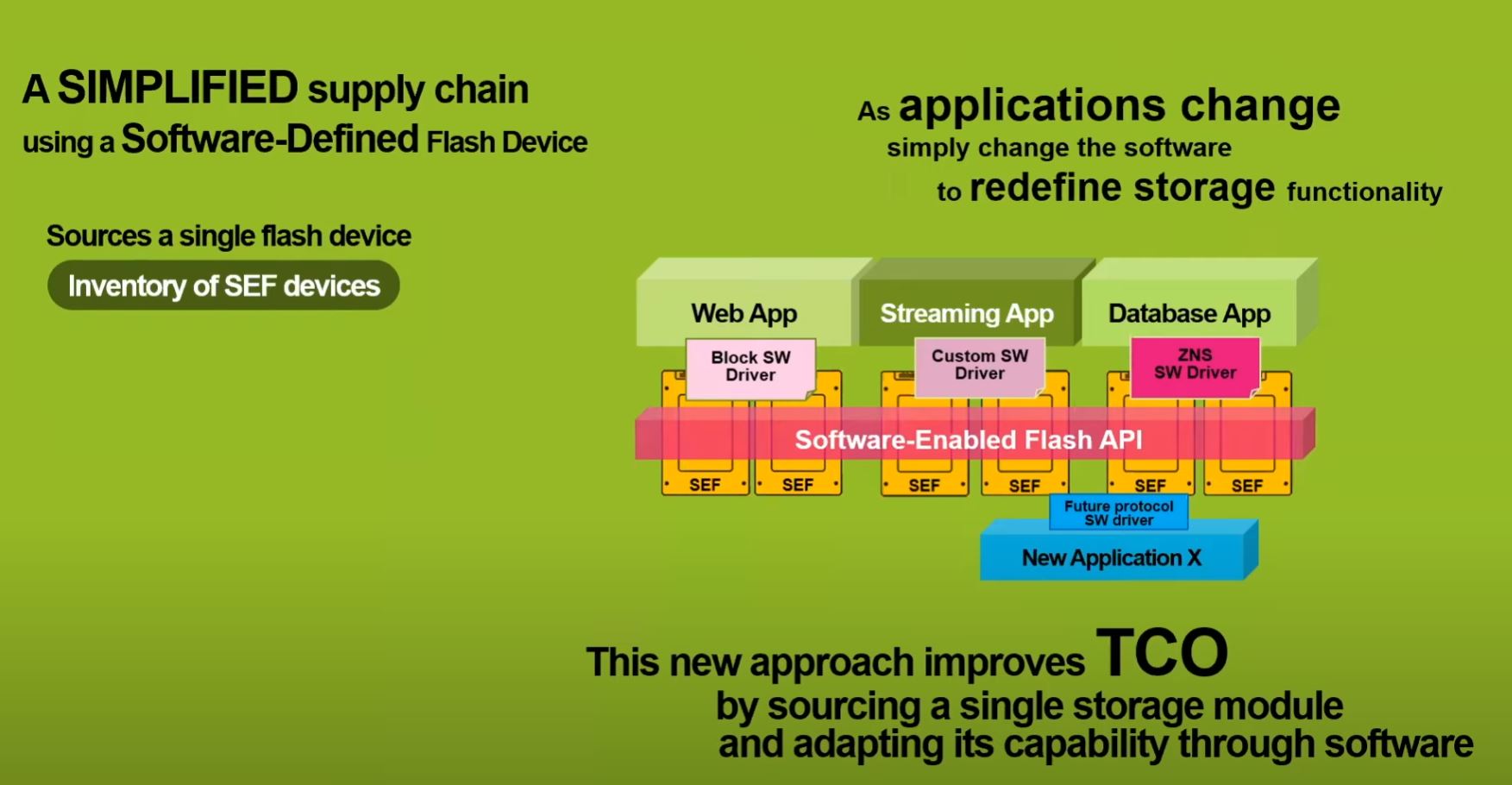
Kioxia is highlighting its ability to use its flexible controller architecture along with these software-enabled flash capabilities to tailor drives to large cloud providers.
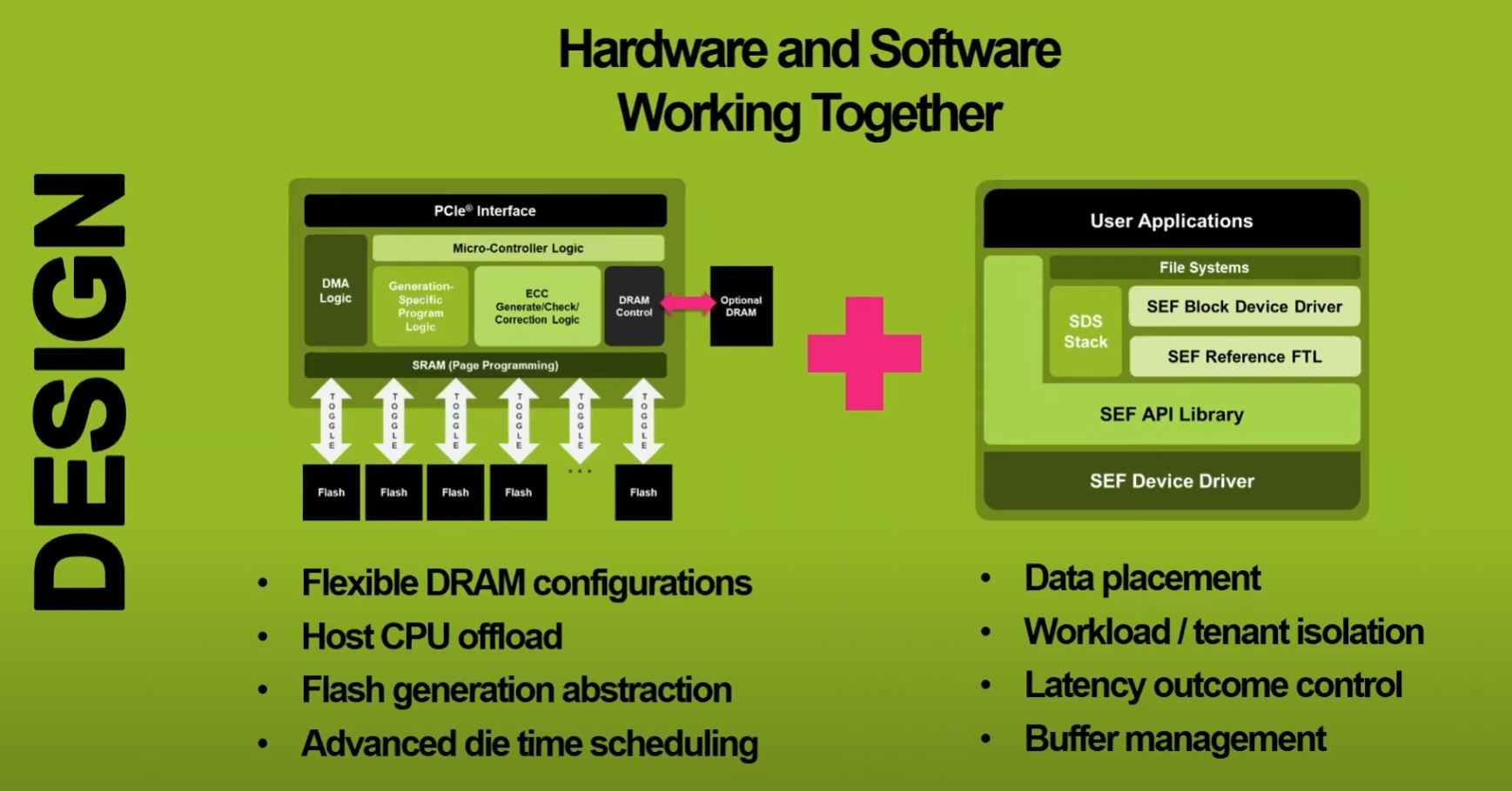
Thinking a step below a large cloud provider, even in a small-to-medium enterprise on-prem infrastructure these days having a few hundred SSDs is common. All-flash storage arrays from major vendors are another source of flash. This would be a big change to think of flash in this manner at a smaller scale, but the benefits are still there.
Final Words
Overall, this is cool technology, especially if you deploy many SSDs. Hopefully over the next few quarters we are going to see more from the company. Perhaps the biggest item that makes one ponder the future with technology like this is that there are two very different use cases for SSDs. First, is as boot devices, and other devices where there are a very small number of drives (say 1-8) where this type of technology is not needed. Then very large installations with many drives where this approach can offer huge cost savings.

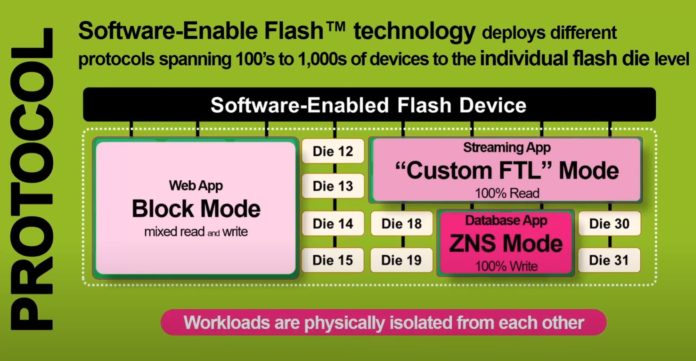


Looks like computation storage with a different name. Nothing really new.
This is very interested article!